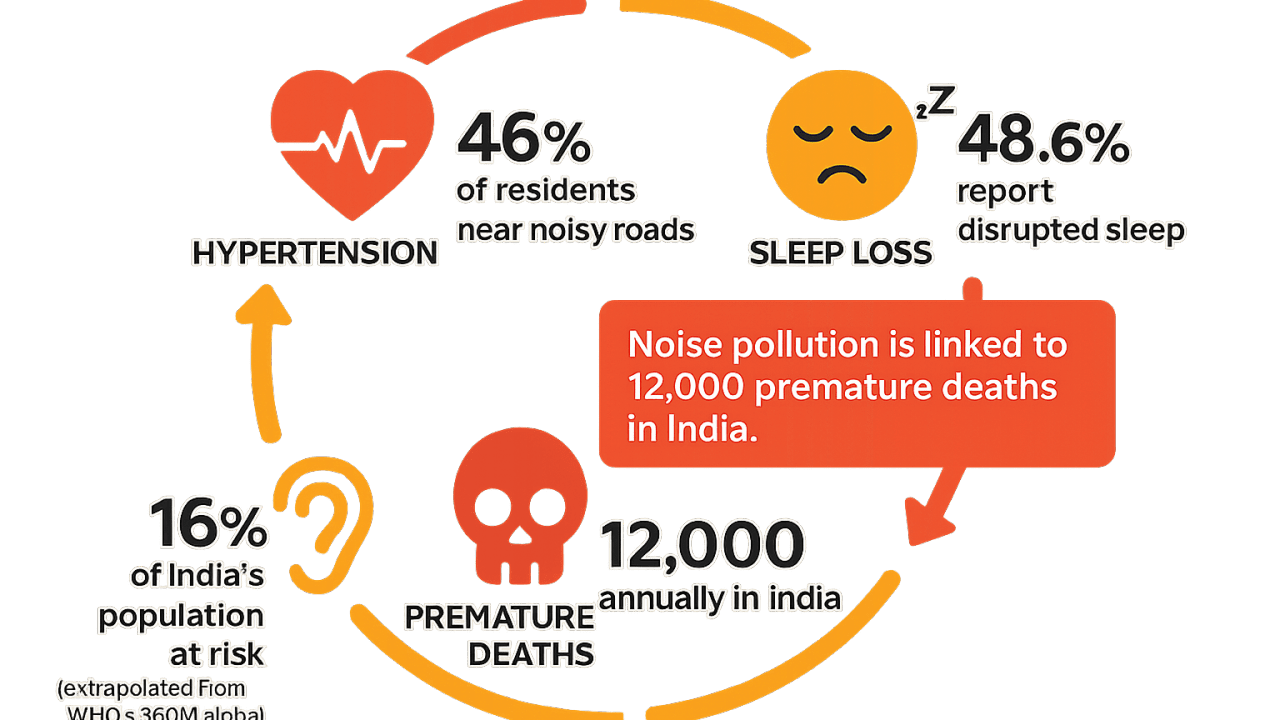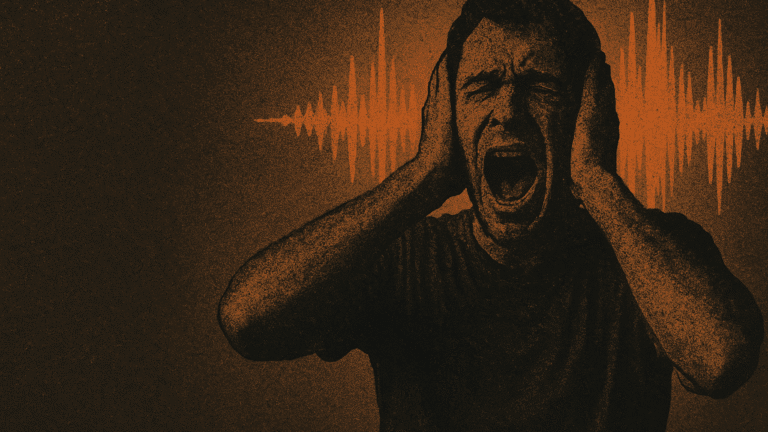Noise Pollution: The Silent Killer Affecting 10 Crore Indians & How It’s Damaging Your Health
Picture this: You’re lying in bed at 2 AM, staring at the ceiling. The distant honking of trucks, the hum of a nearby AC unit, and the occasional bark of a street dog keep your mind racing.
You’re not just annoyed—you’re exhausted, anxious, and struggling to focus at work. This isn’t just a bad night’s sleep. It’s a public health crisis unfolding in cities across India.
New research reveals that chronic noise pollution isn’t just an inconvenience—it’s a neuro-endocrine stressor impacting over 10 crore Indians daily. Let’s unpack how noise is silently wrecking our health and what we can do about it.
The Science of Stress: How Noise Hijacks Your Biology
Your body’s response to noise is primal. When noise levels exceed 65 dB (the sound of a busy office), your brain triggers a fight-or-flight response:
- Cortisol & Adrenaline Surge: Noise spikes stress hormones, keeping your body in a perpetual state of alert.
- Circadian Rhythm Disruption: Nighttime noise reduces deep sleep by 40%, impairing cellular repair and cognitive function.
- Metabolic Mayhem: Chronic noise worsens insulin resistance, raising risks of diabetes and obesity.
- Systemic Inflammation: Prolonged exposure increases C-reactive protein (CRP) levels, linked to heart disease and autoimmune disorders.
In short: Noise pollution isn’t just “annoying”—it’s a full-body assault.
Beyond Annoyance: The Cascading Health Impacts
The numbers are alarming:
- 10 crore Indians are exposed to noise levels exceeding WHO limits (55 dB).
- Urban areas like Delhi, Mumbai, and Bangalore report average noise levels of 80-100 dB (equivalent to a chainsaw).
Health fallout includes:
- Metabolic Risks: 30% higher incidence of diabetes in noise-polluted neighborhoods.
- Mental Health: Anxiety and depression rates double in high-noise zones.
- Learning Deficits: Children in noisy schools show 20% lower memory retention.
- Cardiovascular Strain: Hypertension risks rise by 18% with every 10 dB increase.
This isn’t just a “quality of life” issue—it’s a life expectancy issue.
The Invisible Threat in Our Daily Lives
Where does noise come from?
- Traffic: 70% of urban noise pollution stems from vehicles.
- Construction: Unregulated drilling and machinery add 90 dB+ spikes.
- Urban Design: Lack of green buffers and noise-absorbing infrastructure.
Example: Delhi’s average nighttime noise levels (75 dB) exceed WHO’s 55 dB limit by 36%. No wonder Delhiites report 2x higher sleep disorders!
What Can We Do? Solutions for Individuals & Policymakers
For Individuals:
- Use noise-canceling headphones in loud environments.
- Soundproof homes with double-glazed windows and heavy curtains.
- Advocate for “quiet hours” in residential areas.
For Policymakers:
- Enforce stricter Noise Pollution Rules (2000): Penalize honking in silent zones (hospitals, schools).
- Invest in noise barriers along highways and metro lines.
- Promote urban greening: Trees can reduce noise by 5-10 dB.
A Call to Action: Turn Down the Volume
Noise pollution is a solvable problem. Let’s demand:
- Urban Planning Reforms: Prioritize noise mapping in city development.
- Corporate Accountability: Tech parks and industries must adopt noise-mitigation tech.
- Public Awareness: Share this post to spread the word—silence saves lives.
Share this blog with someone who needs to read this. Let’s make noise pollution the next big public health conversation.
At Nexus3P Foundation, we support both for-profit and not-for-profit ventures, partnering with mission-driven founders who are using deep tech to address Noise Pollution, one of humanity’s greatest challenges.
If you or someone you know is working toward this cause, we’d love to connect and explore how we can collaborate to turn bold ideas into real-world impact.







